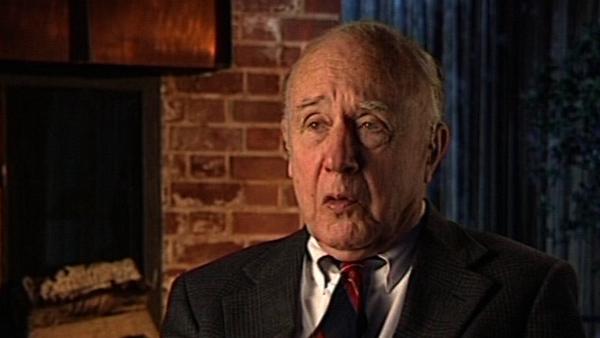NEXT STORY

More detailed account of the Hanford problems. Fermi's agreement
RELATED STORIES

NEXT STORY

More detailed account of the Hanford problems. Fermi's agreement
RELATED STORIES


|
Views | Duration | |
|---|---|---|---|
| 51. Klaus Fuchs. The US Reactor Safeguard Committee | 706 | 04:13 | |
| 52. The reactor project | 444 | 03:08 | |
| 53. That Xenon and Iodine Business | 485 | 04:40 | |
| 54. More detailed account of the Hanford problems. Fermi's agreement | 407 | 03:29 | |
| 55. Locating the Du Pont pile. Washingon and the Cascade Mountains | 373 | 02:37 | |
| 56. MetLab, Chicago 1942. Wheeler and Wigner. Reactor coolants | 398 | 04:22 | |
| 57. Writing up papers | 472 | 01:09 | |
| 58. 'Boiled down' explanation of 'action at a distance' concept | 659 | 00:47 | |
| 59. The conception of an electron moving backward in time | 1048 | 02:15 | |
| 60. Polyelectrons | 421 | 01:58 |


I had had the task of considering all the way things could go wrong, looking for things under the bed. And in fission you produce new atomic nuclei, and these nuclei might have unpleasant properties. And what could those properties do to their reaction, the danger of stopping the reaction or making it run away? And as a result of talking about this with me, one of the Du Pont engineers, George Graves, said- we'll make the reactors, the piles, bigger by 400 tubes than we originally planned, so as to give an excess capacity if we run into trouble from these possibilities you describe. George Graves had a lovely description of judgment, an awareness of all the factors in a situation, and an appreciation of their relative probability, and that's exactly what he had- good judgment. He made himself, by questioning me and others, aware of all the possibilities. And he had an appreciation of the chances that might happen. And, in fact, it did happen. When the reactor was started up, the first big production reactor, it went fine. The control rods could be pulled out to release the reaction. And then the water came out hot, from the energy released. Then, after a few more hours, it turned out that the piles seemed to lose reactivity, the control rods had to be pulled out further and further to keep it going, and after a while, there was no more further to pull them out, and the pile shut itself down, with everybody running around wildly. What was it? Was it something in the water that got into the rods? Or was there some unexpected chemical reaction? Or did the nitrogen in the air somehow get fixed in the pile? Nitrogen is known to have a neutron absorbing power that could slow it down. But after some hours, the pile recovered, began to operate again, and the control rods had to be put back in more and more. And it went fine for a while, then they had to be pulled out again to get it to go, and again, it shut itself down. Well, from the timing of these events, I figured there were two atomic nuclei involved. One, a mother of a poison, and the daughter, a poison. And from the length of time, I could- the mother must live so long and the daughter so long, I could look at the chart of atomic nuclei on the wall opposite my office. And there was Xenon and Iodine that fit the diagnosis perfectly. And, in fact, that's what was responsible. Well, to overcome that difficulty, all we had to do was put in those extra tubes that George Graves had insisted on. That was an exciting time, that xenon and iodine business.
John Wheeler, one of the world's most influential physicists, is best known for coining the term 'black holes', for his seminal contributions to the theories of quantum gravity and nuclear fission, as well as for his mind-stretching theories and writings on time, space and gravity.
Title: That Xenon and Iodine Business
Listeners: Ken Ford
Ken Ford took his Ph.D. at Princeton in 1953 and worked with Wheeler on a number of research projects, including research for the Hydrogen bomb. He was Professor of Physics at the University of California and Director of the American Institute of Physicists. He collaborated with John Wheeler in the writing of Wheeler's autobiography, 'Geons, Black Holes and Quantum Foam: A Life in Physics' (1998).
Duration: 4 minutes, 41 seconds
Date story recorded: December 1996
Date story went live: 24 January 2008